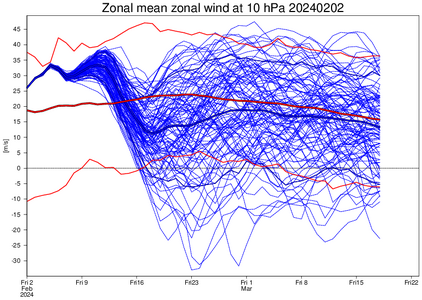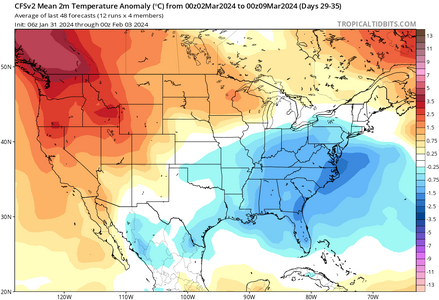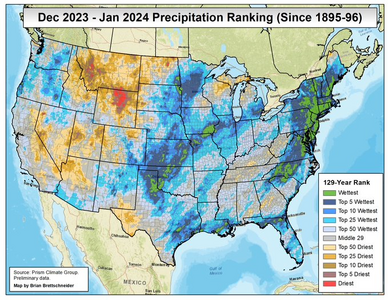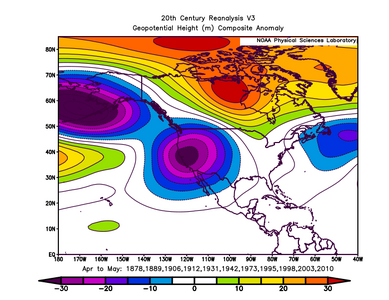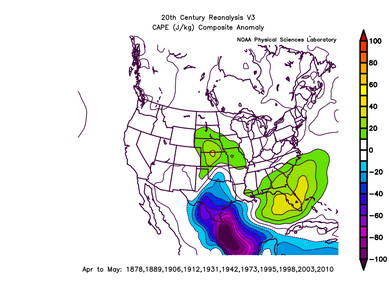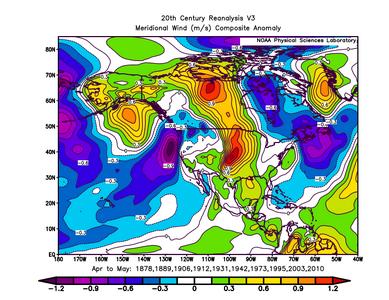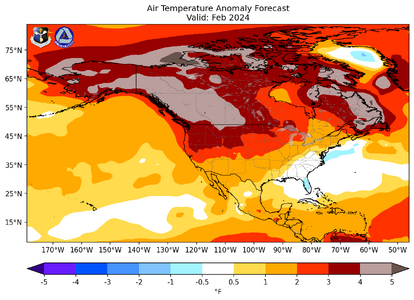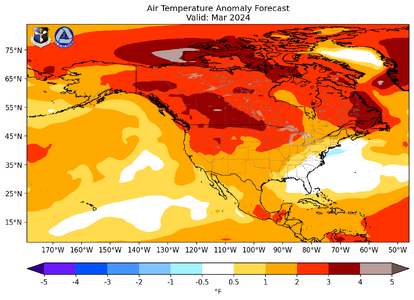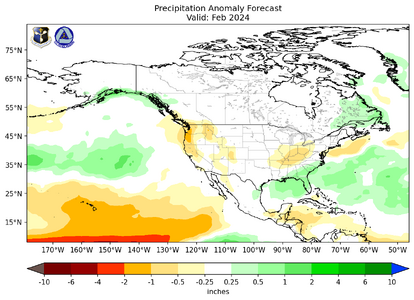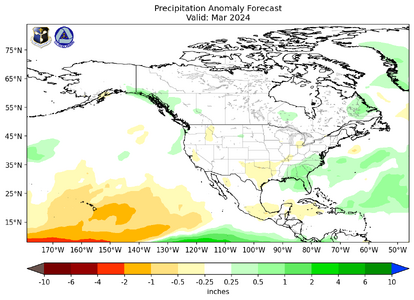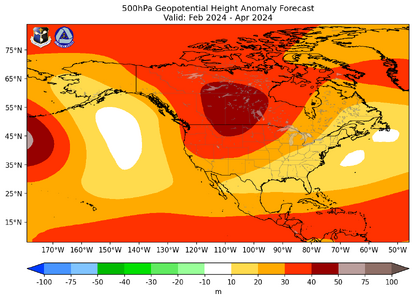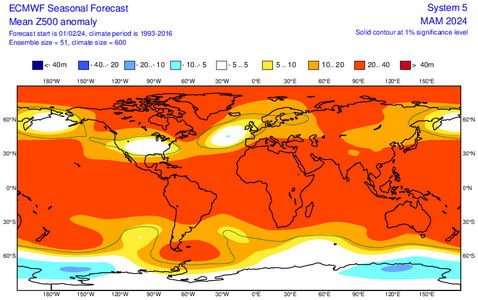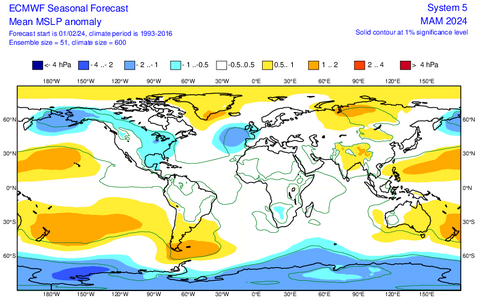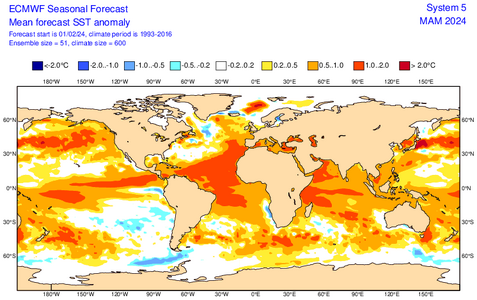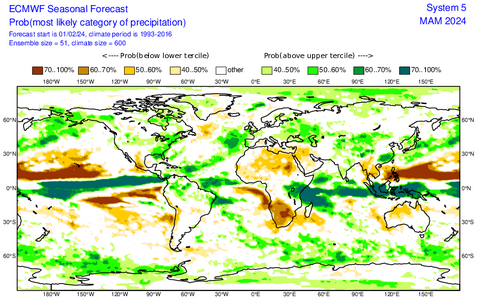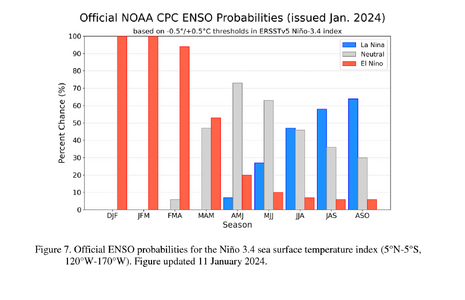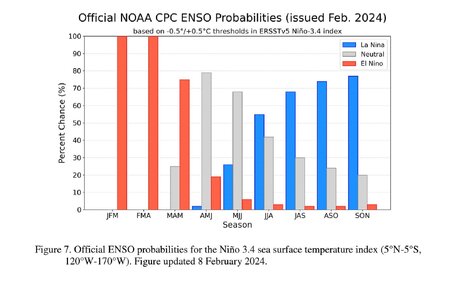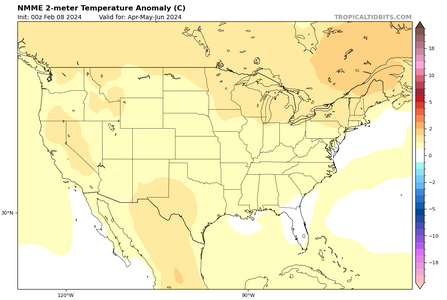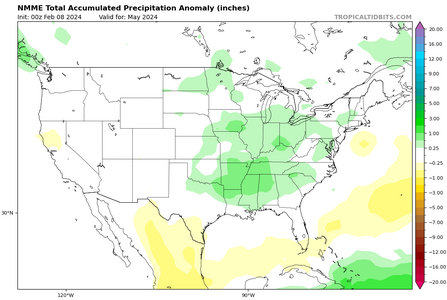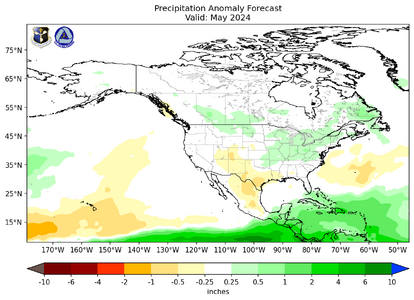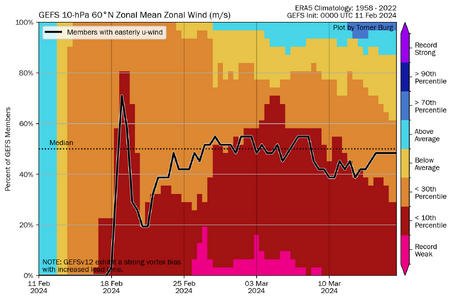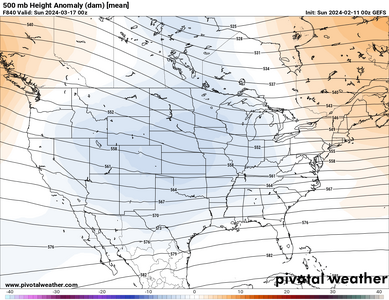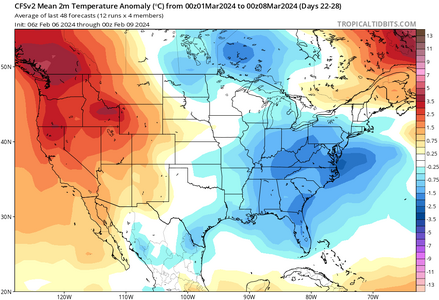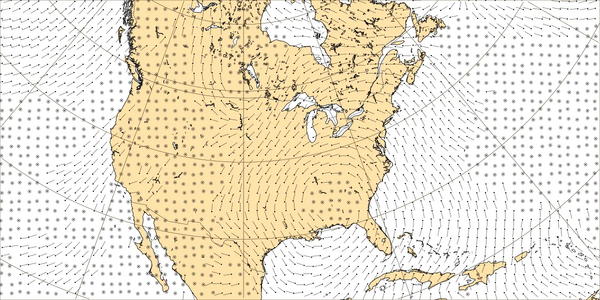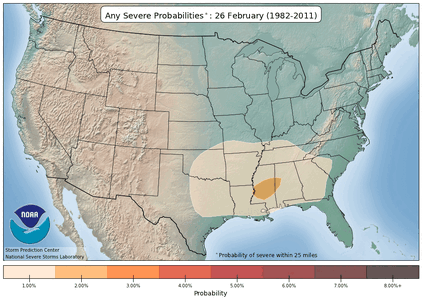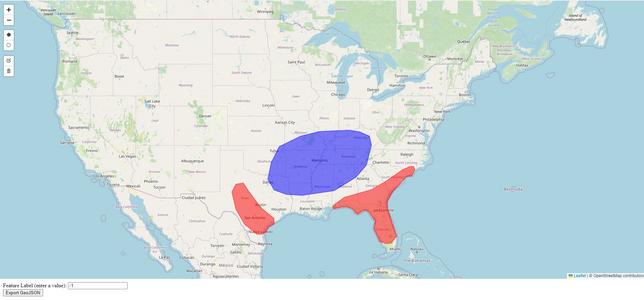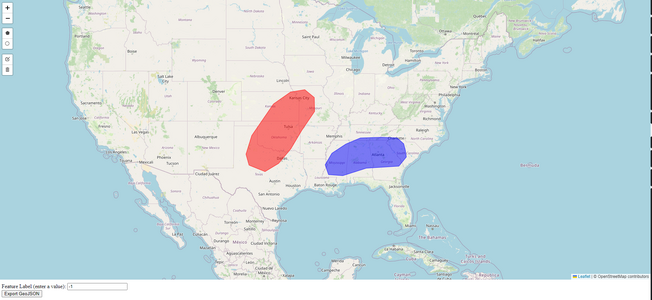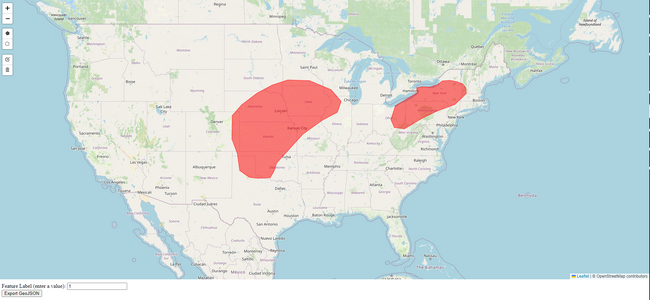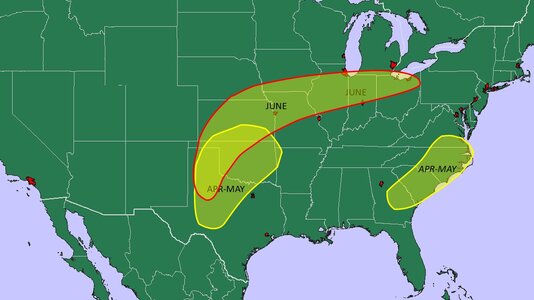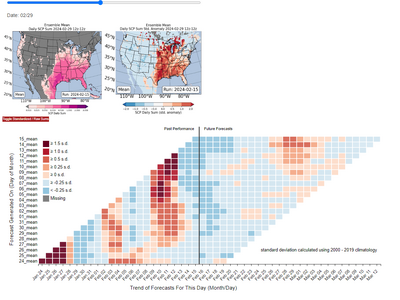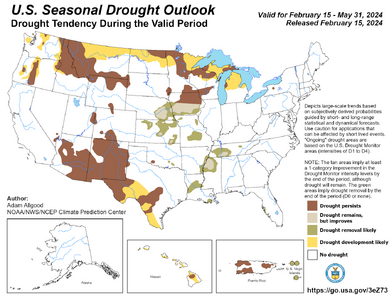adlyons
EF2
Hey everyone,
I hope you had a great holiday season and new year. I figured I'd get the ball rolling with a new 2024 thread. How was your chase season? What do you hope this year brings? Any big plans or predictions for 2024?
Now on to the seasonal forecasting stuff.
I am reshowing some of the verification work that I had presented in the previous thread from the 2023 forecast. Storm Data 2023 won't be ready until February or March, so I am using some of the preliminary data SPC sent in for the tornado counts. I won't rehash the entire thread from 2023, but the quick summary is as follows;
2023 Summary:
So, some big takeaways:
Takeaways from 2023:
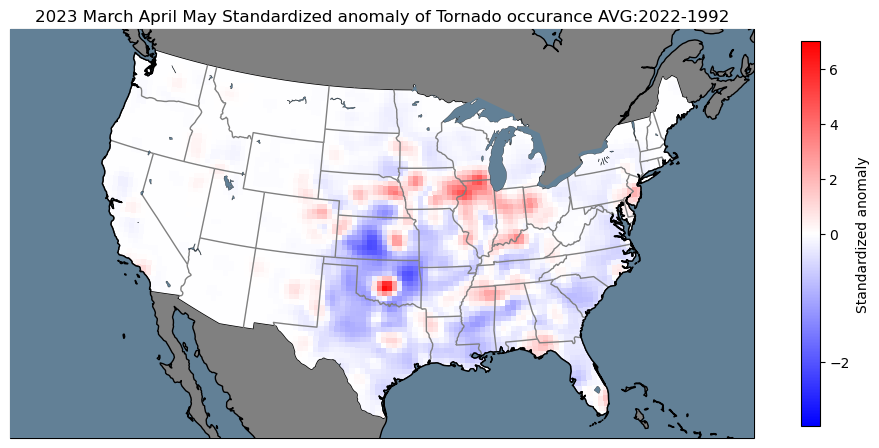
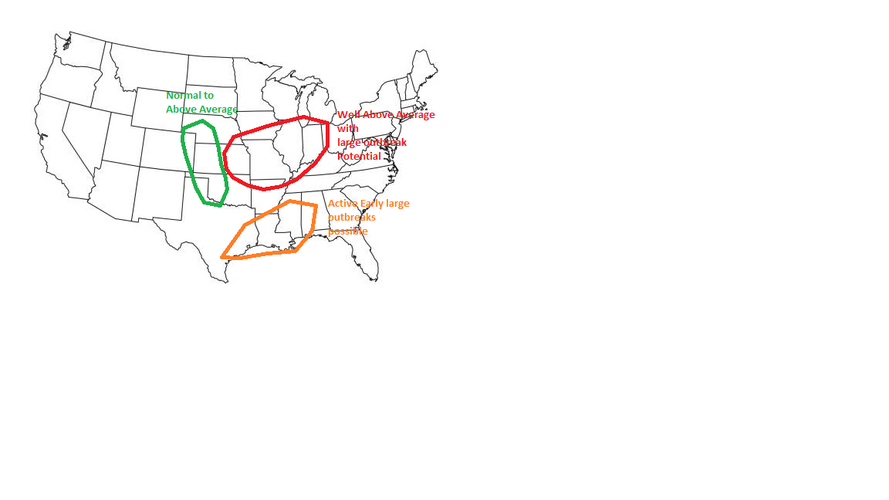
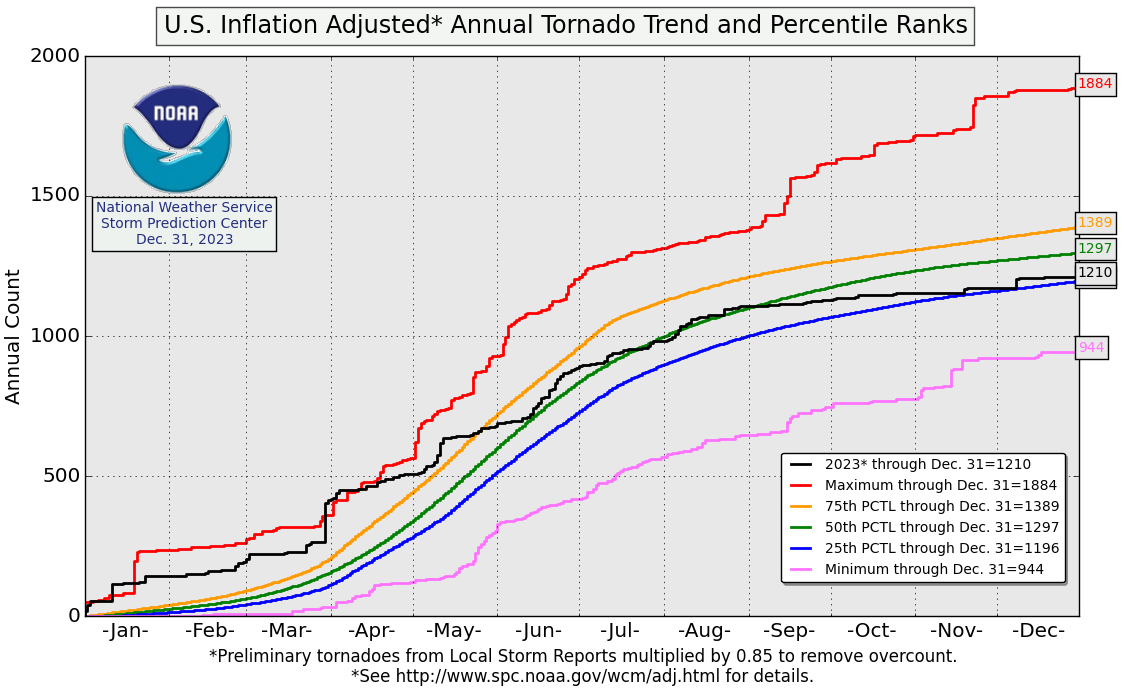
Graphically, the story is quite telling. A very early start to the year with tornado counts in the +75th percentile, and even briefly exceeding the maximum, kept rolling right into early Spring, but then fell off quickly. Using the inflation-adjusted LSR trends, parts of April and May were very flat. The Fall season was also very quiet. Spatially the story is even more obvious. Nearly the entire central US has significant negative anomalies. On the flipside, the Midwest and parts of the South did see a big area of positive anomalies in the 2-4 STD range. The maximum in z-score (standardized anomaly) was actually over OKC with a value of nearly 6. Two tornado events occurred there during the year. This shows the power that just a couple of events can have in changing the statistical outcomes for small areas. With that in mind, I have some planned changes for my 2024 forecast to look more objectively at the spatial anomalies. More on that below.
For 2024, things are still a bit murky and I haven't had a ton of time to sit down and come up with an explicit forecast yet. I have some vague ideas, which I'll share here, and hopefully, I will have a full write-up later this month, or into early Feb. The biggest thing that has been apparent so far is that El Nino is on its way out, quickly. The updated ENSO forecasts from CPC show Nino has peaked and is already entering a rapid decay process in the eastern Pacific. Recent GEFS data is also suggesting significant strengthening of zonal winds which would favor coastal upwelling and the emergence of negative SST anoms. This will likely favor a rapid decay with Neutral to even weak La Nina conditions possible by mid to late Spring. Meanwhile, the Gulf of Mexico remains quite warm and should continue to be so through the spring according to several of the coupled climate models.
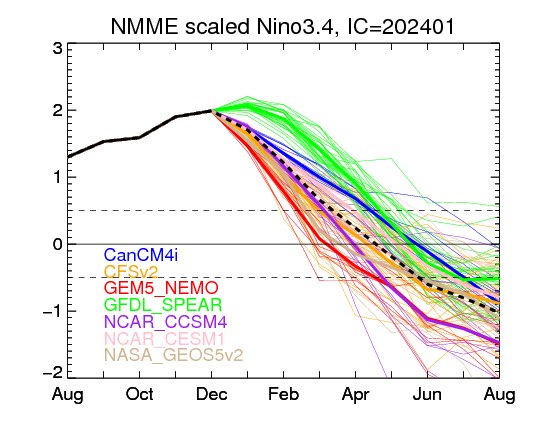
So, with EL Nino on the way out, what sort of pattern can we expect? Again, the details are still a little fuzzy and it will likely be dependent on how ENSO transitions. We have been in quite an active storm track as of late but, displaced much farther south than usual. This is a classic strong El Nino signal with a southerly displaced jetstream. That appears likely to continue with longer-range GEFS/EPS and Weekly ECMWF/CFS data suggesting the possibility of additional cold air outbreaks over the central and eastern US toward the end of Jan and into Feb. (Read about S.H.LEE's work here)
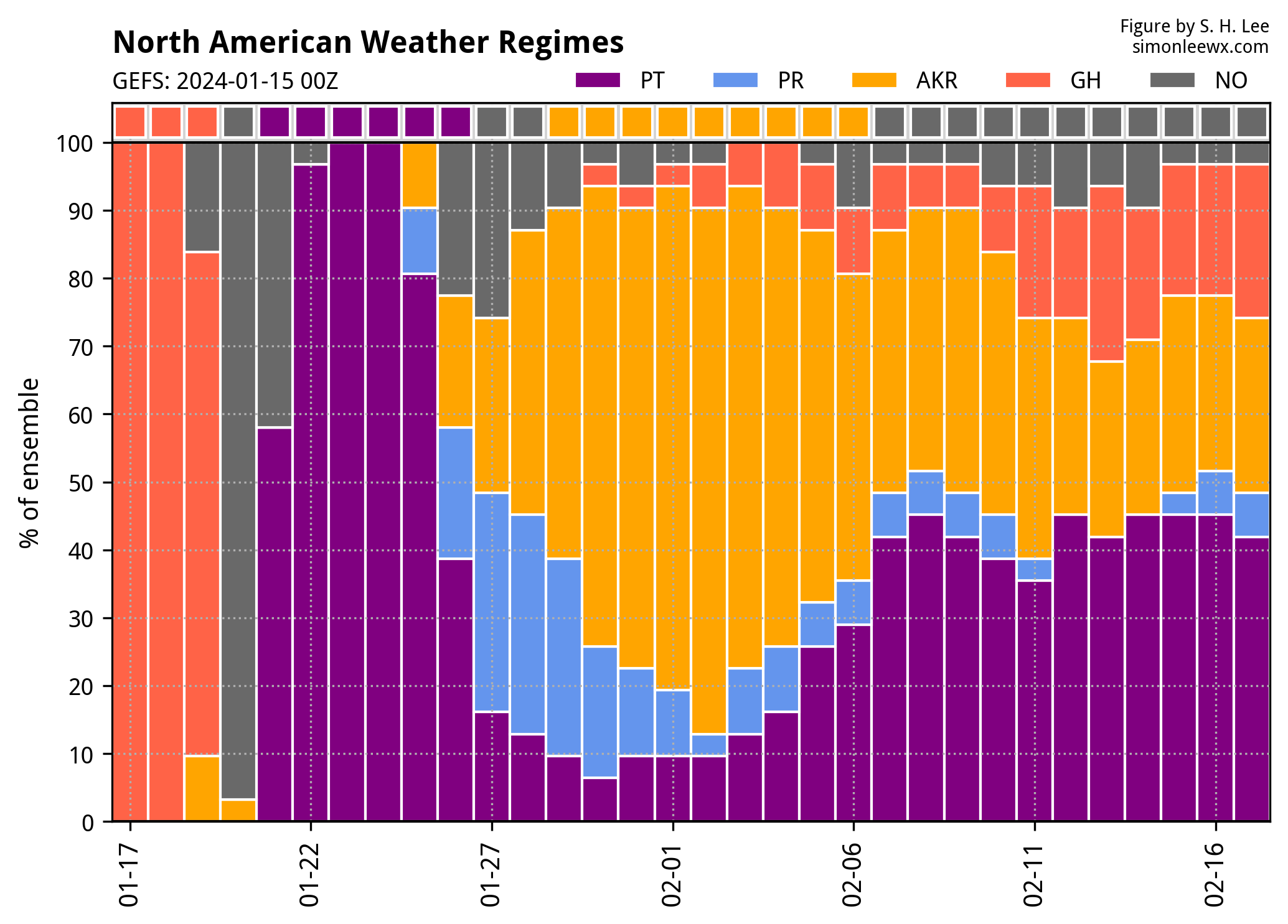
With significant cold air intrusions and an active southerly displaced jet, this year looks to be starting much differently than the previous. I do not expect much in the way of severe weather activity through the remainder of Jan into Feb. This pattern could continue into March with cold air locked over parts of the northeastern/central US suppressing inland moisture return and limiting the potential for severe storms/tornadoes. While a few severe days are certainly still possible with an active Jet and pattern, they look most likely to be displaced south over Southeast Texas, the far southern Gulf Coast, southern Carolinas, and Florida in typical strong El Nino fashion. Looking at some work by past SPC forecasters, watch anomalies are quite apparent over the Mid South and southern Plains in El Nino years through the winter and early Spring. There's some recovery in March across the Texas Panhandle and High Plains though which could be a good sign for chasers. But, the gist of this is that this may be a slower start without much severe weather early in the year. This is likely due to the tendency for EL Nino to displace the jet stream farther south during the winter and more persistent ridging over the central US. With cold air over the CONUS, It takes considerable time for the jet to lift north and allow moisture to return inland. This shifts for favorable patterns toward the back half of the season, sometimes.
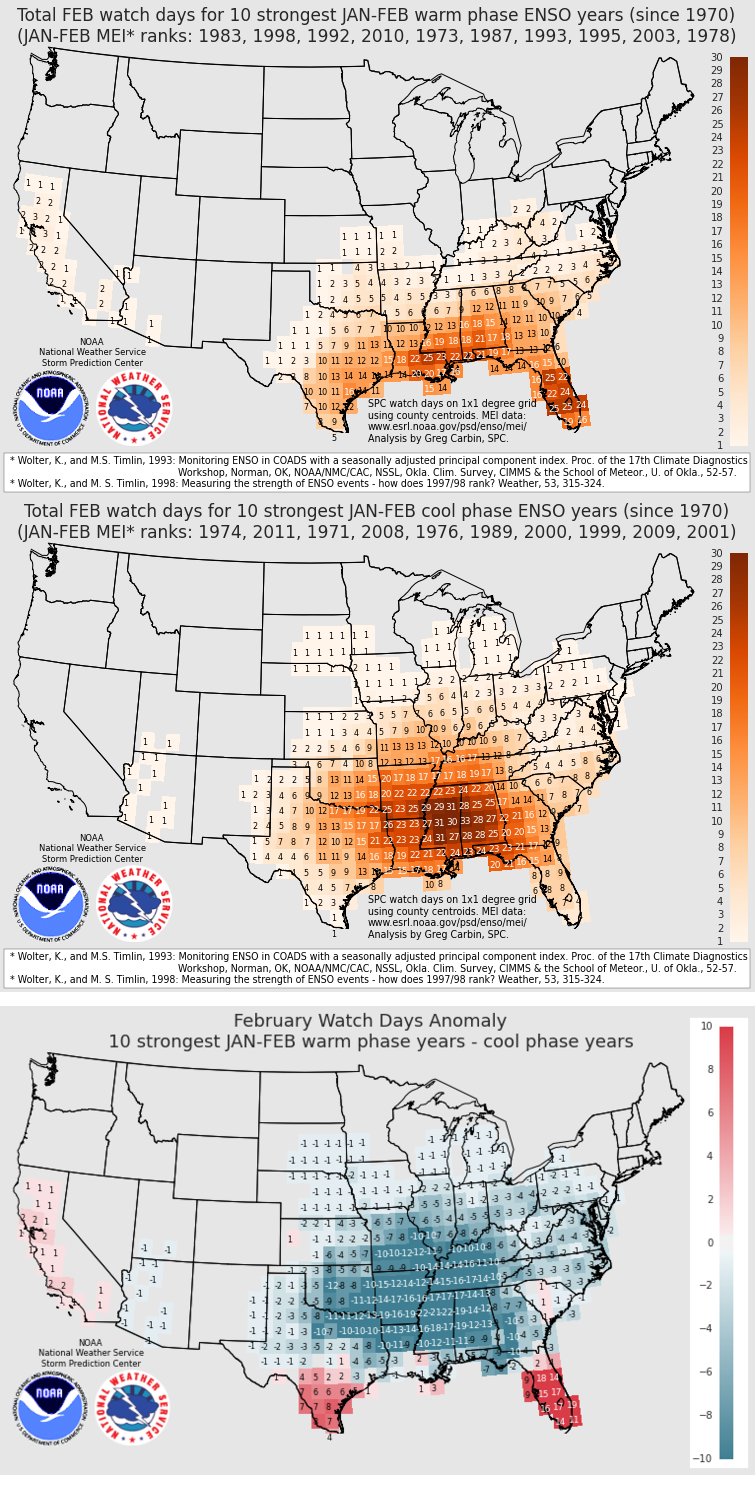
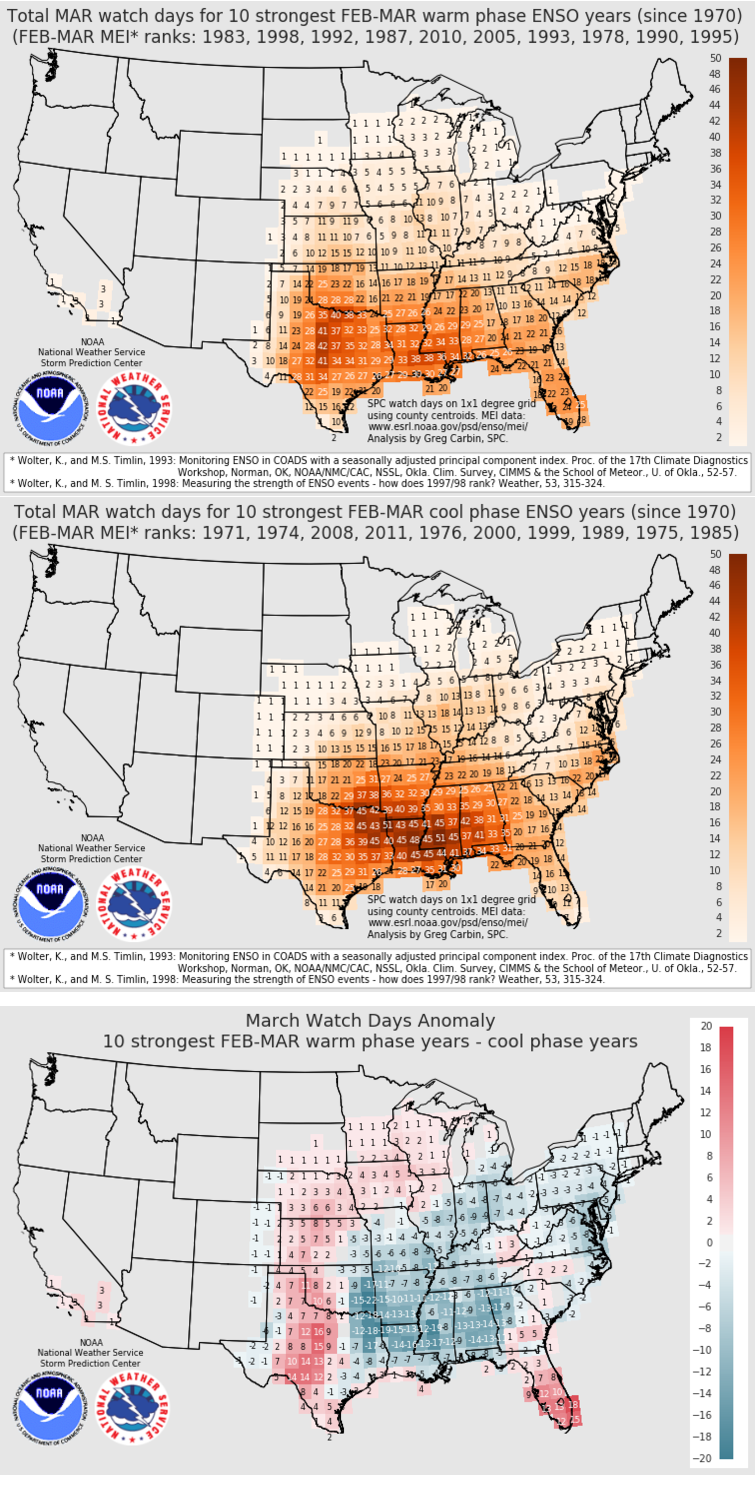
Now as we get later into typical El Nino Years, things look a little different. After slow starts, May is usually average to slightly above average with strong Nino year tornado counts. There are positive anomalies over the High Plains and parts of the Midwest/Ohio Valley. There are still negative anomalies over parts of the southern and central Plains, but they are skewed eastward. This also doesn't account for early termination of strong Ninos which is what we are expecting this year. Recent research from Dr. Sang Kim Lee (Below: Sang-Ki Lee et al 2016 Environ. Res. Lett. 11 044008 figures B and F) indicates a statistically significant chance greater than 40% for tornadoes and outbreak days across the Plains and Midwest during May when El Nino terminates early. While there isn't a ton of data out there about this specific scenario, some of the climate models do show a similar pattern (CANSIPS 200 mb zonal wind) to Dr. S K Lee's work indicating some enhanced westerly flow over the southwestern US and above-average surface pressure over the southeast from late April through May. This coincides with some positive precipitation anomalies over the Plains. This could support some better chasing in the later part of the season across the Plains.
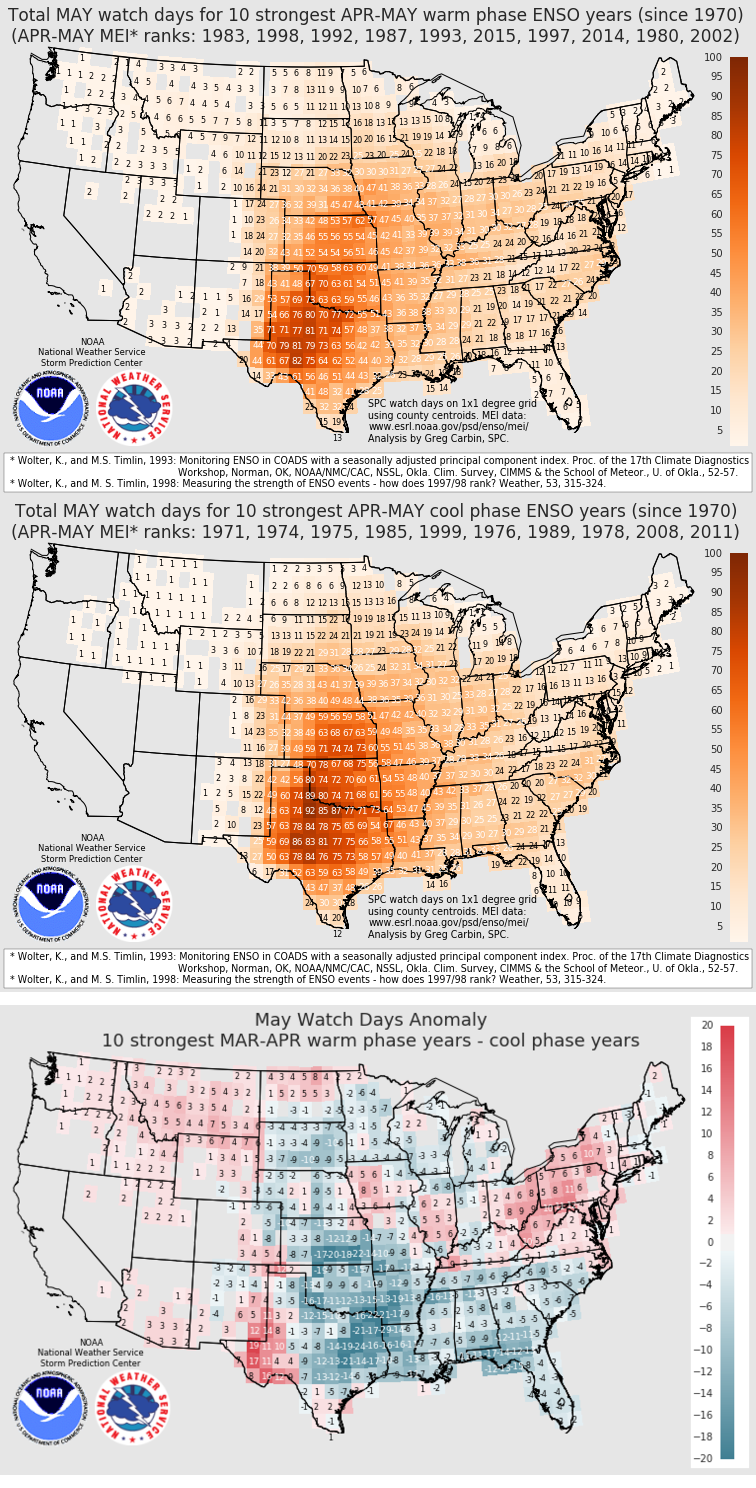
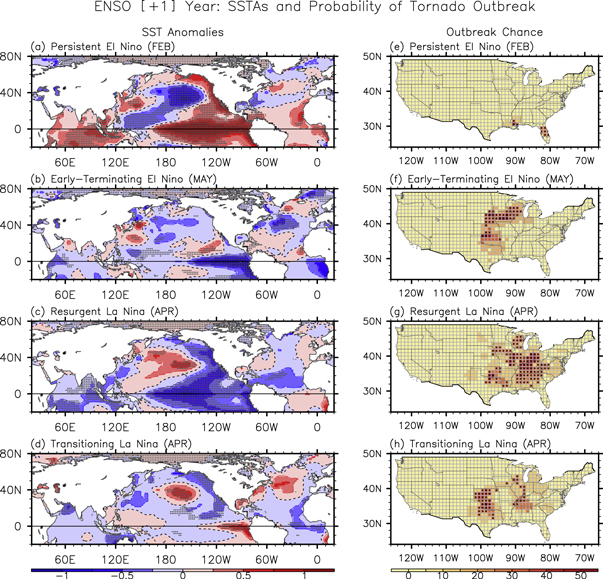
Environmental Research Letters, Volume 11, Number 4
Citation Sang-Ki Lee et al 2016 Environ. Res. Lett. 11 044008
DOI 10.1088/1748-9326/11/4/044008
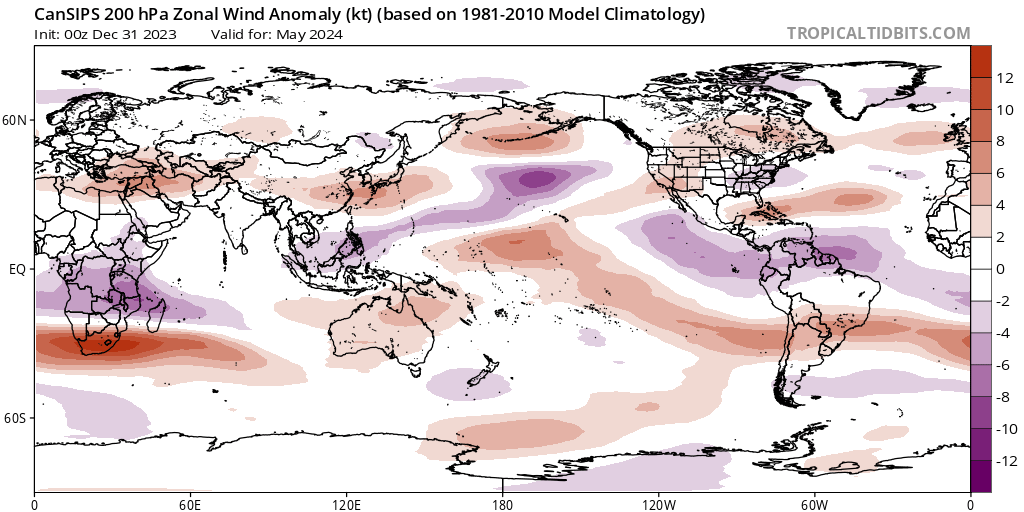
So for a preview of the 2024 chasing forecast:
Finally, in addition to the seasonal tornado number forecasting I've been doing since 2020, I've been looking at ways to be more objective in my spatial forecasting. instead of the generic maps with "above average, below average etc..." I took some time and developed a web tool that I can geo-reference specific forecast info. For example, I can draw a polygon and assign a value to it like the graphic below. I can then take that geojson and overly it on the same grid I used to make the tornado anomaly maps from above. By doing this I can objectively assign each grid box a forecast value and a verification value. I can then compare my forecast to the verification objectively instead of the eye test I have been using. I plan to make a map for March/April/May in the upcoming forecast and periodically update them as the season goes on. Using some simple metrics I'm hopeful that I can show some forecast skill for tornado anomalies at lead times of several months.
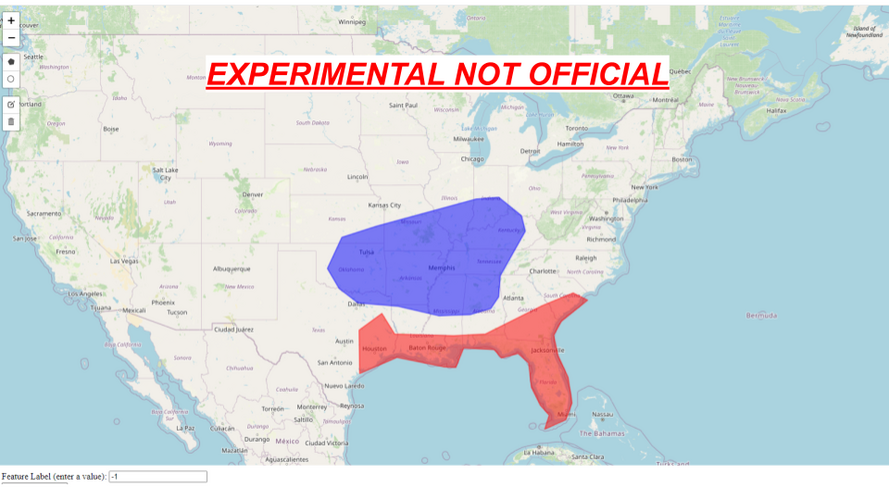
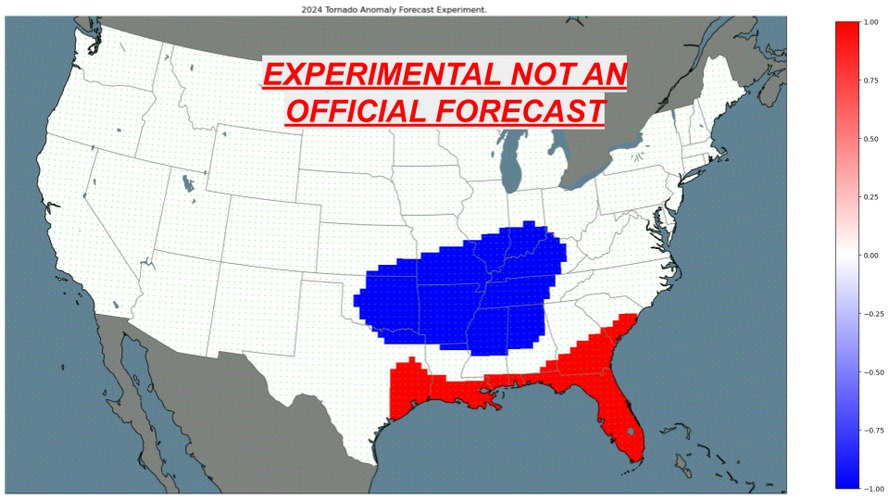
(Example 2024 forecast graphic. My best guess for the remainder of Winter and into early Spring.)
Things I hope to add for the 2024 forecast:
That's enough rambling from me.
I hope you had a great holiday season and new year. I figured I'd get the ball rolling with a new 2024 thread. How was your chase season? What do you hope this year brings? Any big plans or predictions for 2024?
Now on to the seasonal forecasting stuff.
I am reshowing some of the verification work that I had presented in the previous thread from the 2023 forecast. Storm Data 2023 won't be ready until February or March, so I am using some of the preliminary data SPC sent in for the tornado counts. I won't rehash the entire thread from 2023, but the quick summary is as follows;
2023 Summary:
So, some big takeaways:
- I expect an above-average chase year with above-average numbers of tornadoes, especially early. Combined with an average back half our numbers should be up.
- Several early-season events may produce a lot of tornadoes from the Mid South through the Midwest and eastern Plains. I would prepare to chase a bit earlier than average and be situationally aggressive. Positive TNI values favor increased vertical shear and moisture advection across the central US.
- I expect an average Plains year for the second half of Spring. This is the most uncertain part of the forecast and is conditional upon the ENSO and general flow state behaving. We should see some drought improvement.
- Things that can still go wrong:
- Northwest Flow over the central US mid to late Spring.
- Enhanced risk of Blue Sky Busts on the dryline late this Spring from a warm EML out west.
- ENSO misbehaves and keeps us locked in neutral conditions and weaker background flow. With the Spring predictability barrier still up, it's possible we don't switch and just keep neutral. That could go either way but generally favors lower tornado counts.
Takeaways from 2023:
- As forecast, La Nina decayed early leading to largely ENSO-neutral conditions for Spring. However, El Nino took hold late and grew in strength quickly.
- The forecast called for an active early season (March and April) with a near-normal May. Early starts have been the theme for the last several years with March having 4 above-average years.
- March and the first half of April did meet this with several large outbreaks over the Midwest. But, a very unfavorable pattern developed toward the end of April and into early May.
- Late May, once again, failed to materialize. Outside of a few days mid-month, and a week of storms in New Mexico, very little occurred inside traditional chase alley across the southern and central Plains.
- June showed up in a big way. I don't have the preliminary data yet but a several weeks-long severe weather outbreak occurred from the Plains into the Southeast with tornadoes, hail and damaging winds.
| Month | Tornado Count | 1992-2022 Avg | Forecast | Result |
| March | 206 | 91 | Above Average | Hit |
| April | 147 | 184 | Average | Miss |
| May | 172 | 270 | Average | Miss |
| MAM Total: | 525 | 545 | Above Average (775) | Miss |



Graphically, the story is quite telling. A very early start to the year with tornado counts in the +75th percentile, and even briefly exceeding the maximum, kept rolling right into early Spring, but then fell off quickly. Using the inflation-adjusted LSR trends, parts of April and May were very flat. The Fall season was also very quiet. Spatially the story is even more obvious. Nearly the entire central US has significant negative anomalies. On the flipside, the Midwest and parts of the South did see a big area of positive anomalies in the 2-4 STD range. The maximum in z-score (standardized anomaly) was actually over OKC with a value of nearly 6. Two tornado events occurred there during the year. This shows the power that just a couple of events can have in changing the statistical outcomes for small areas. With that in mind, I have some planned changes for my 2024 forecast to look more objectively at the spatial anomalies. More on that below.
For 2024, things are still a bit murky and I haven't had a ton of time to sit down and come up with an explicit forecast yet. I have some vague ideas, which I'll share here, and hopefully, I will have a full write-up later this month, or into early Feb. The biggest thing that has been apparent so far is that El Nino is on its way out, quickly. The updated ENSO forecasts from CPC show Nino has peaked and is already entering a rapid decay process in the eastern Pacific. Recent GEFS data is also suggesting significant strengthening of zonal winds which would favor coastal upwelling and the emergence of negative SST anoms. This will likely favor a rapid decay with Neutral to even weak La Nina conditions possible by mid to late Spring. Meanwhile, the Gulf of Mexico remains quite warm and should continue to be so through the spring according to several of the coupled climate models.

So, with EL Nino on the way out, what sort of pattern can we expect? Again, the details are still a little fuzzy and it will likely be dependent on how ENSO transitions. We have been in quite an active storm track as of late but, displaced much farther south than usual. This is a classic strong El Nino signal with a southerly displaced jetstream. That appears likely to continue with longer-range GEFS/EPS and Weekly ECMWF/CFS data suggesting the possibility of additional cold air outbreaks over the central and eastern US toward the end of Jan and into Feb. (Read about S.H.LEE's work here)

With significant cold air intrusions and an active southerly displaced jet, this year looks to be starting much differently than the previous. I do not expect much in the way of severe weather activity through the remainder of Jan into Feb. This pattern could continue into March with cold air locked over parts of the northeastern/central US suppressing inland moisture return and limiting the potential for severe storms/tornadoes. While a few severe days are certainly still possible with an active Jet and pattern, they look most likely to be displaced south over Southeast Texas, the far southern Gulf Coast, southern Carolinas, and Florida in typical strong El Nino fashion. Looking at some work by past SPC forecasters, watch anomalies are quite apparent over the Mid South and southern Plains in El Nino years through the winter and early Spring. There's some recovery in March across the Texas Panhandle and High Plains though which could be a good sign for chasers. But, the gist of this is that this may be a slower start without much severe weather early in the year. This is likely due to the tendency for EL Nino to displace the jet stream farther south during the winter and more persistent ridging over the central US. With cold air over the CONUS, It takes considerable time for the jet to lift north and allow moisture to return inland. This shifts for favorable patterns toward the back half of the season, sometimes.


Now as we get later into typical El Nino Years, things look a little different. After slow starts, May is usually average to slightly above average with strong Nino year tornado counts. There are positive anomalies over the High Plains and parts of the Midwest/Ohio Valley. There are still negative anomalies over parts of the southern and central Plains, but they are skewed eastward. This also doesn't account for early termination of strong Ninos which is what we are expecting this year. Recent research from Dr. Sang Kim Lee (Below: Sang-Ki Lee et al 2016 Environ. Res. Lett. 11 044008 figures B and F) indicates a statistically significant chance greater than 40% for tornadoes and outbreak days across the Plains and Midwest during May when El Nino terminates early. While there isn't a ton of data out there about this specific scenario, some of the climate models do show a similar pattern (CANSIPS 200 mb zonal wind) to Dr. S K Lee's work indicating some enhanced westerly flow over the southwestern US and above-average surface pressure over the southeast from late April through May. This coincides with some positive precipitation anomalies over the Plains. This could support some better chasing in the later part of the season across the Plains.


Environmental Research Letters, Volume 11, Number 4
Citation Sang-Ki Lee et al 2016 Environ. Res. Lett. 11 044008
DOI 10.1088/1748-9326/11/4/044008

So for a preview of the 2024 chasing forecast:
- The winter and early Spring season looks to be quiet over the typical Dixie Alley areas. More activity than usual may be possible over parts of the far southern Gulf Coast, southeast Texas, the Carolinas and Florida. However, cold air intrusions may continue to suppress severe chances through the remainder of winter.
- March and April look slower than the past few years. I think the streak of above-average March tornadoes comes to an end this year.
- Traditional chase season has a chance to be a bit better than the last few years. A quickly decaying Nino into neutral may allow for some more active chasing into May.
- Total numbers for MAM will probably be below average but May should be near or slightly above average.
NEW STUFF!
Finally, in addition to the seasonal tornado number forecasting I've been doing since 2020, I've been looking at ways to be more objective in my spatial forecasting. instead of the generic maps with "above average, below average etc..." I took some time and developed a web tool that I can geo-reference specific forecast info. For example, I can draw a polygon and assign a value to it like the graphic below. I can then take that geojson and overly it on the same grid I used to make the tornado anomaly maps from above. By doing this I can objectively assign each grid box a forecast value and a verification value. I can then compare my forecast to the verification objectively instead of the eye test I have been using. I plan to make a map for March/April/May in the upcoming forecast and periodically update them as the season goes on. Using some simple metrics I'm hopeful that I can show some forecast skill for tornado anomalies at lead times of several months.


(Example 2024 forecast graphic. My best guess for the remainder of Winter and into early Spring.)
Things I hope to add for the 2024 forecast:
- Significant (EF/F-2+) tornado anomaly and count forecasts by month.
- Objective spatial standardized anomaly forecast.
- Objective spatial verification of anomaly forecasts.
- A public website to view running forecasts and verification (TBD)
That's enough rambling from me.


